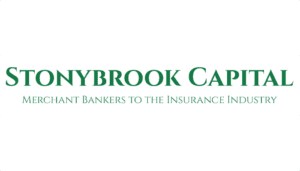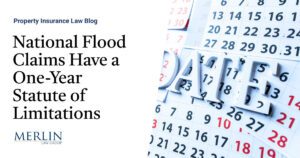Commercial property foreclosures create more work for insurance brokers

Commercial property foreclosures create more work for insurance brokers | Insurance Business America
Property
Commercial property foreclosures create more work for insurance brokers
“There’s going to be more effort all around to keep these insurance programs competitive”
Property
By
Mark Schoeff Jr.
A spike in commercial property foreclosures is increasing pressure on insurance brokers, who must respond to more demanding inquiries from underwriters and seek more sources for coverage, industry participants say.
A recent report from ATTOM, a firm specializing in real estate data, shows that there were 635 commercial foreclosures in January, up from 141 in May 2020. The pool of distressed US commercial properties totaled $85.8 billion at the end of last year, according to data from MSCI.

Commercial property has been buffeted by severe weather, a slow return of employees to their offices following the pandemic, inflation and increasing interest rates – causing the value of property to decline, while loan costs go up and insurance becomes more expensive. The average commercial property insurance premium shot up 18.3% in the second half of last year, according to CBiz Inc.
In this atmosphere, insurance underwriters are looking for more detailed information about distressed properties than ever before, said Mike Genna (pictured immediately below), senior vice president for the US property practice at Marsh.
Since pandemic, office commercial real estate sector has faced high vacancy rates, which has led to reduced rental income and property valuations … average decline in office buildings’ sale prices in 4Q2023 was -16% per @Economics
@MSCI_Inc pic.twitter.com/pxSaLLzhTj
— Liz Ann Sonders (@LizAnnSonders) February 27, 2024

Previously, underwriters may have just wanted a completed application for insurance. Now, they’re delving more deeply into issues like the occupancy rate of the building, past appraisals and loss history.
“Carriers have become a lot more rigorous in their approach to underwriting than in the past,” Genna said. “The challenge [for brokers] is to present the underwriter with the right information.”
Underwriters have to do much more due diligence in the commercial property sector, said Kevin Madden, managing director and real estate practice leader at Aon.
“Because of this hard market, because of this challenging insurance market, their suspicion level [is] up incredibly,” Madden said. “It just creates more work for an overworked underwriter already – which is where the broker comes in and does a lot of that work and highlights the positives that differentiates their client.”
More intense questioning
An example of where a broker might have to respond to more intense questioning from an underwriter would be in an application for coverage of a structure that’s been hammered by severe weather.
“We’re going to need to outline the plan on when that roof will be repaired,” Genna said.
Underwriters will also likely press on how an office building or other structure will be maintained. If it’s unoccupied, for instance, it’s more likely someone on the property will hurt herself.

“When a building sits empty, a lot more things can go wrong, increasing the probability of losses,” said Pete Romano (pictured immediately above), executive vice president and national real estate practice leader at Lockton Companies.
Occupancy dictates surplus lines
Challenges arise even if a building is partially occupied. Although the country has largely emerged from the pandemic, working remotely lingers and stings commercial real estate.
Owners are turning to excess and surplus lines of insurance coverage, if an office building’s usage dips below two thirds.
“Ideally, they’d like to see these buildings with 65-70% occupancy if [policies] are written in the admitted market,” Genna said.
Given the parlous condition of commercial real estate, it’s increasingly likely brokers will have to work with multiple carriers to find the best cost and coverage combination.
“The job of the broker is becoming more critical because there’s not a one-size-fits-all approach,” Romano said. “There’s going to be more effort all around to keep these insurance programs competitive. The ability to navigate these challenges from a strategic, tactical and transactional basis, will be the key to driving the best result for the insured.”
Headwinds becoming hurricanes?
Commercial property headwinds can seem as if they’re building to a hurricane level, but it’s unclear the extent to which that storm will hit the insurance industry.
“It’s like a low-pressure system that forms in the Atlantic but is still too far out to determine if it becomes a hurricane and threatens land,” Romano said. “The key is to start thinking through your contingencies and coverages now, so you have options later.”
One broker said assets owners may be experiencing setbacks, but the insurance sector is taking commercial-property problems in stride.
“I am not sure that I see an impact on the property insurance marketplace by any uptick in foreclosures,” Barry Whitton, managing director at Burns & Wilcox Brokerage, wrote in an email. “The marketplace responds like it always has and provides an available coverage option.”
The real estate and insurance industries have experience going through trying times, Madden said. He pointed to the financial crisis in the late 2010s.
“We have the playbook from 15 years ago,” Madden said. The best plays involve “getting out in front” of the risks by explaining to underwriters what property owners are doing with space and how they will maintain it.
“The good news about real estate, even if they go bankrupt, somebody’s got to pay for the insurance,” Madden said. “It’s either going to be the owner or the lender.”
Related Stories
Keep up with the latest news and events
Join our mailing list, it’s free!






